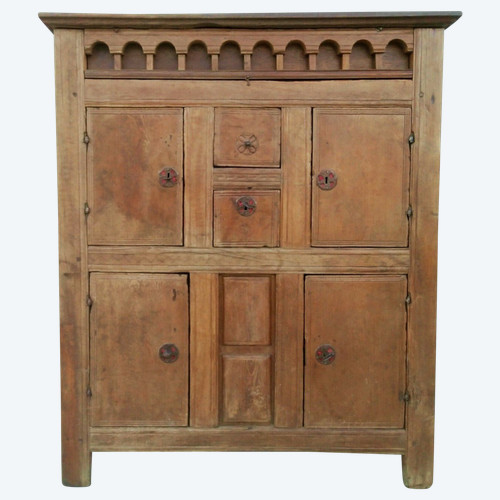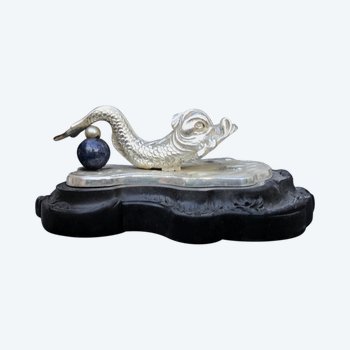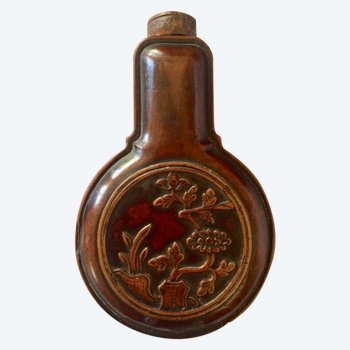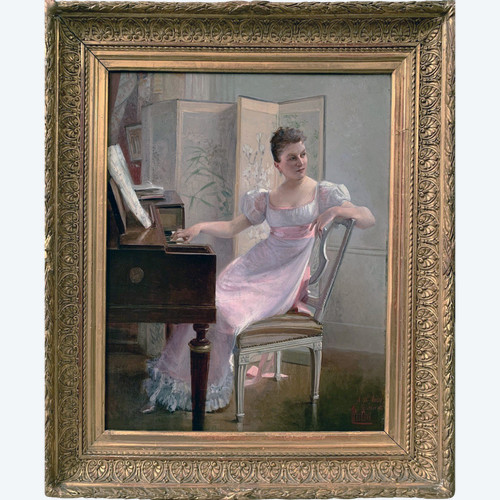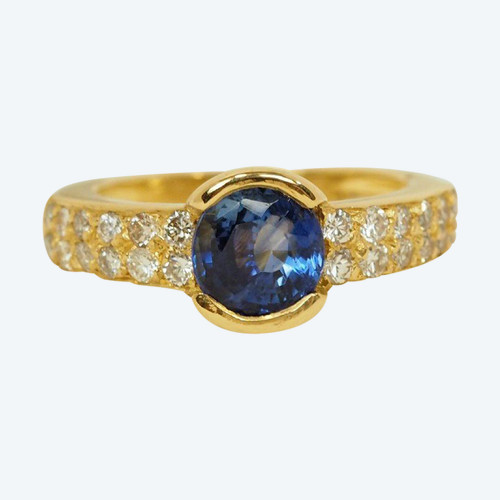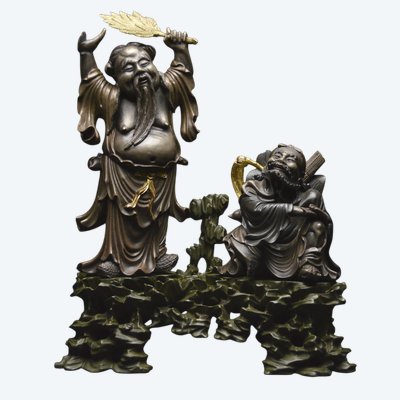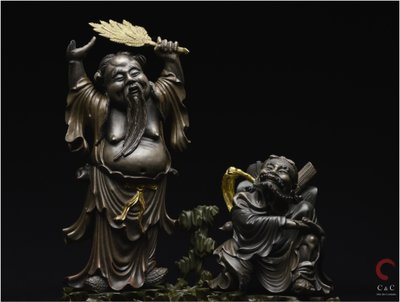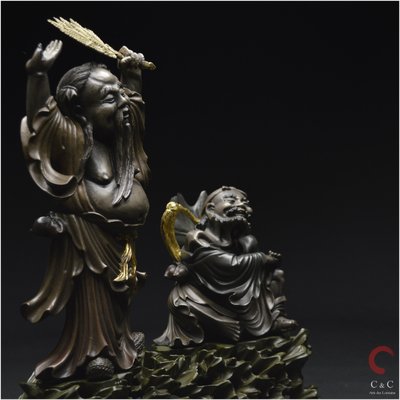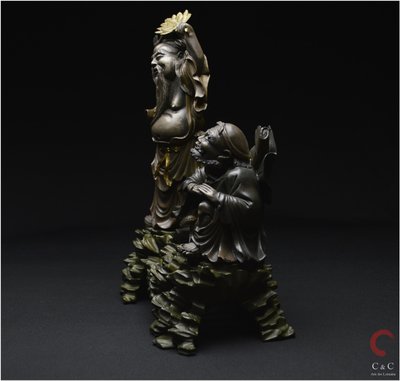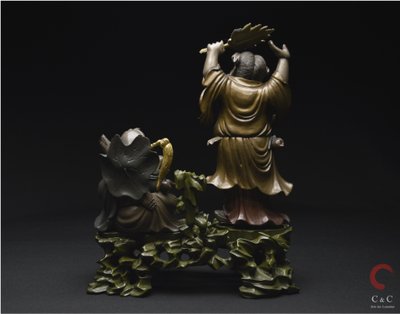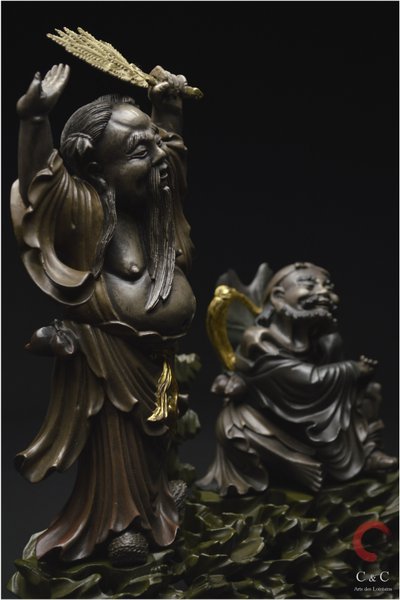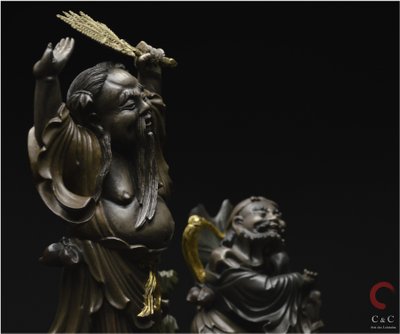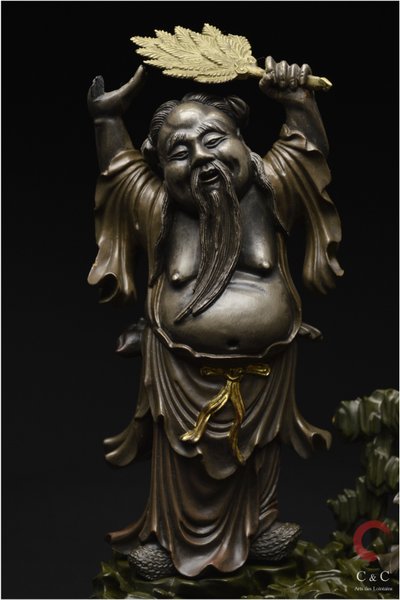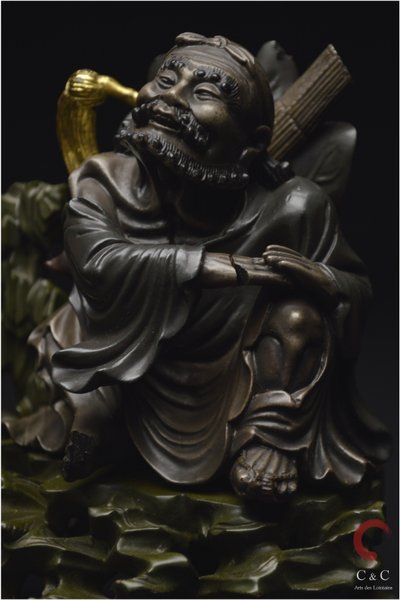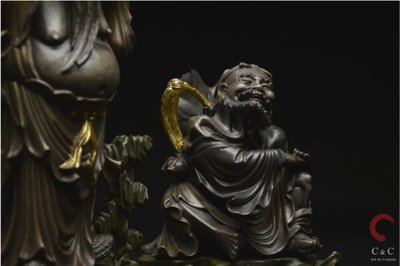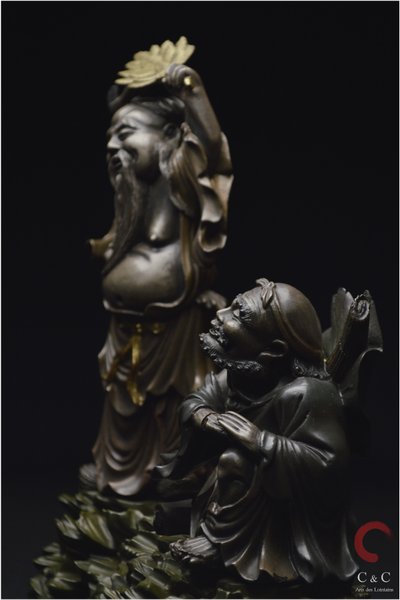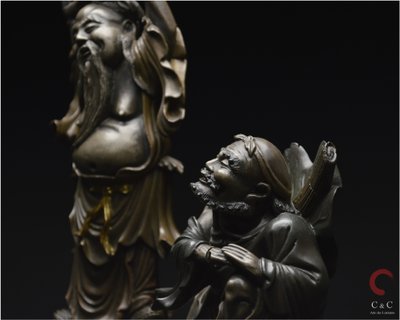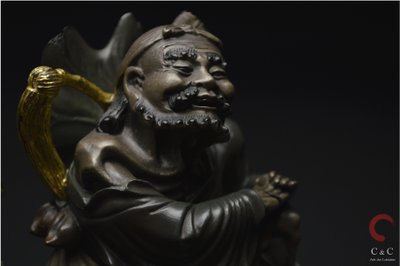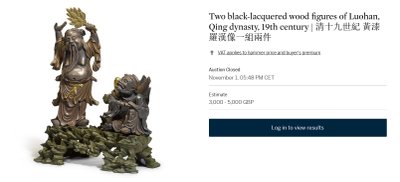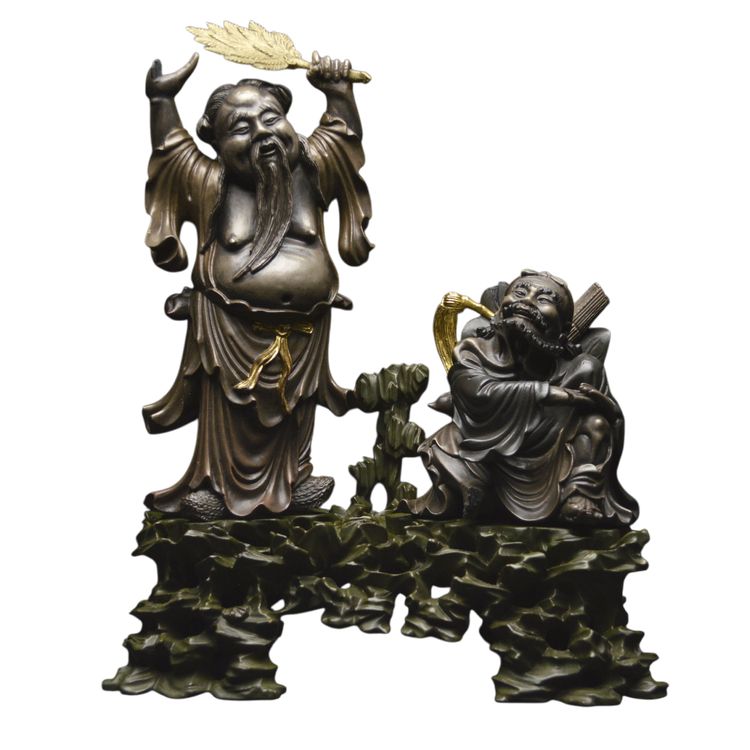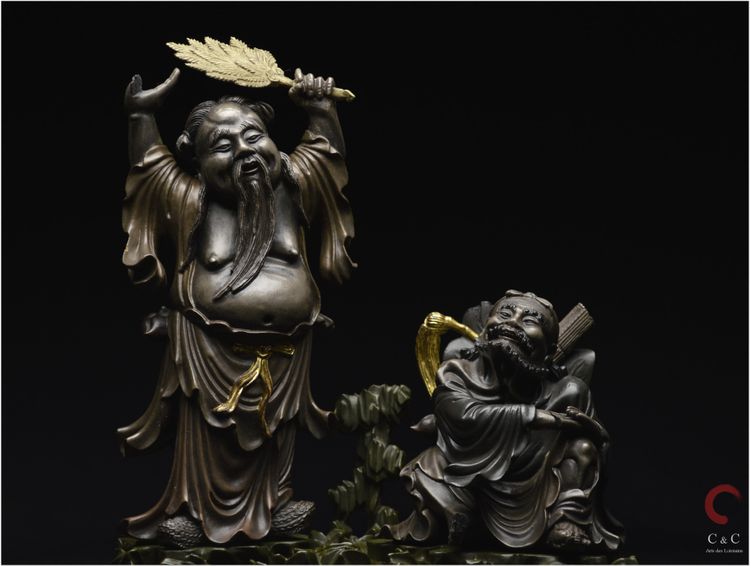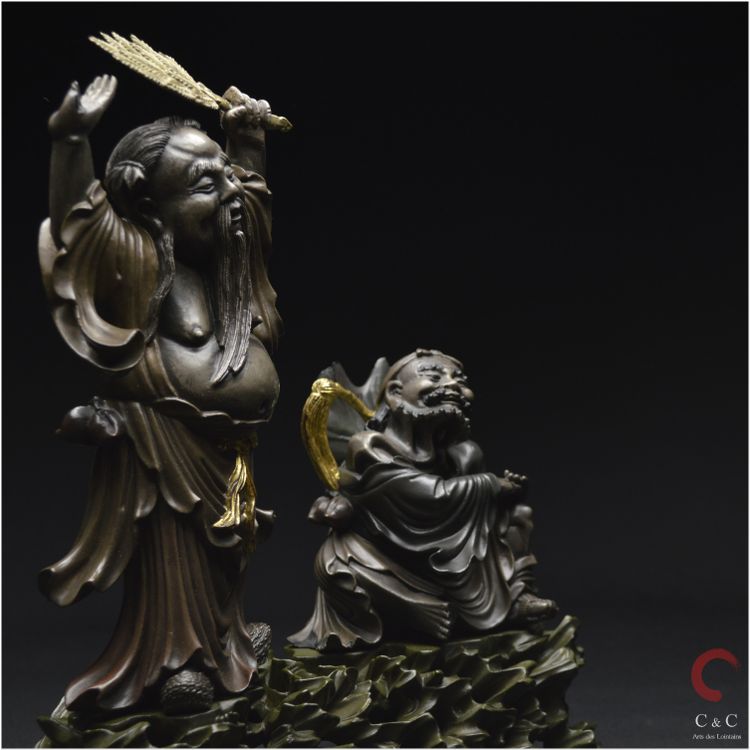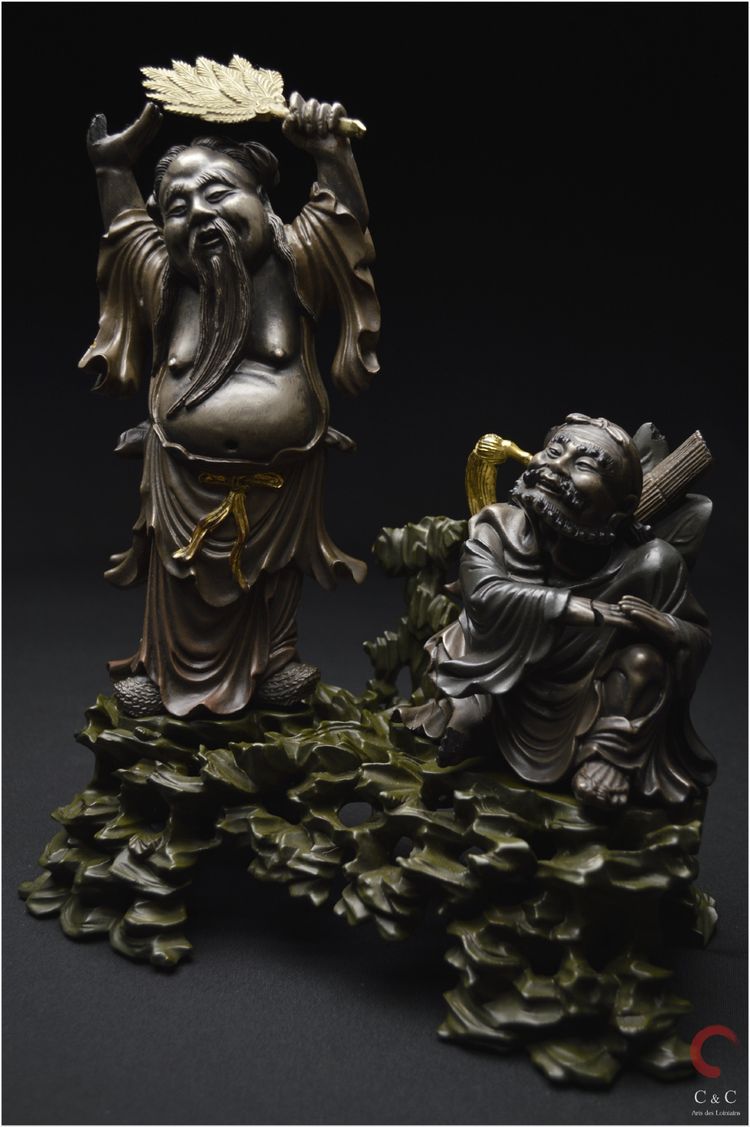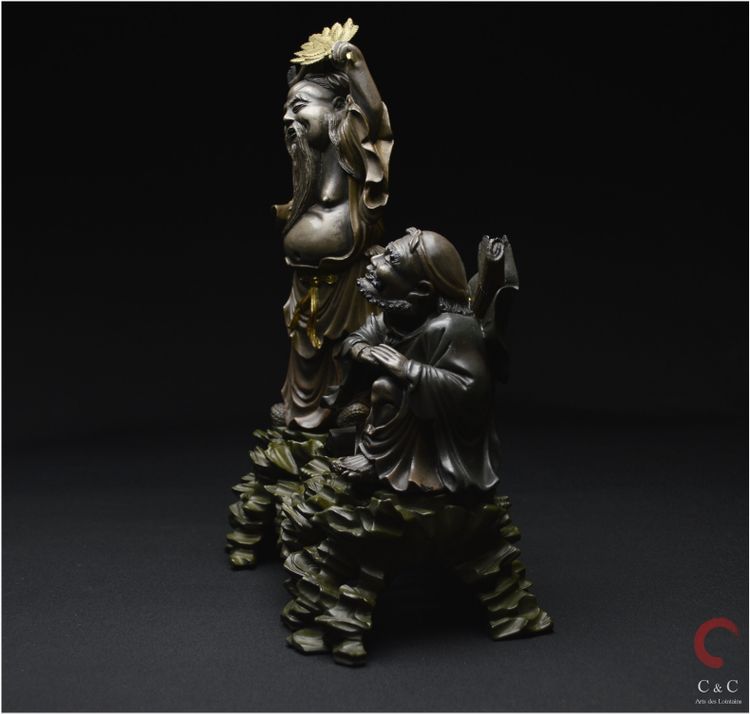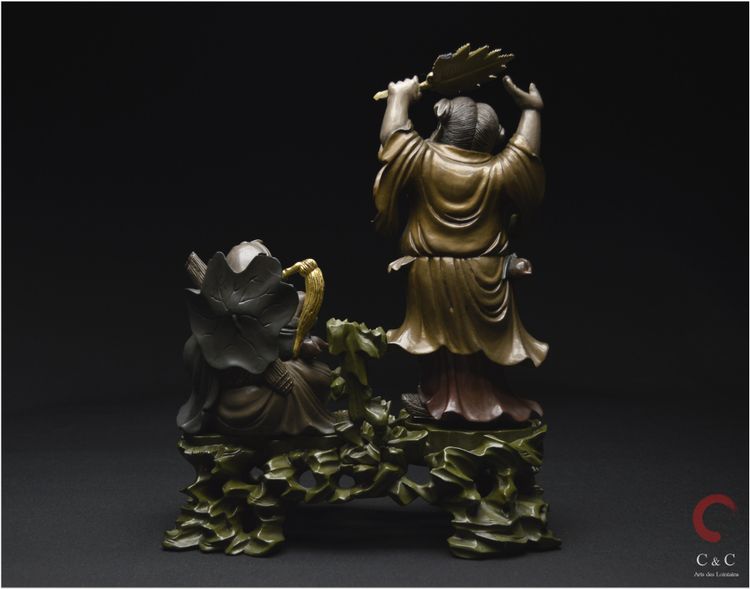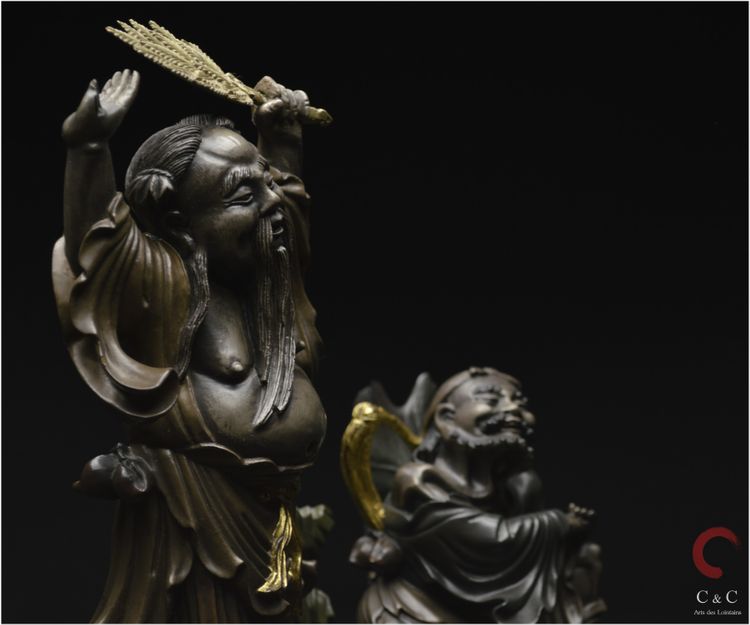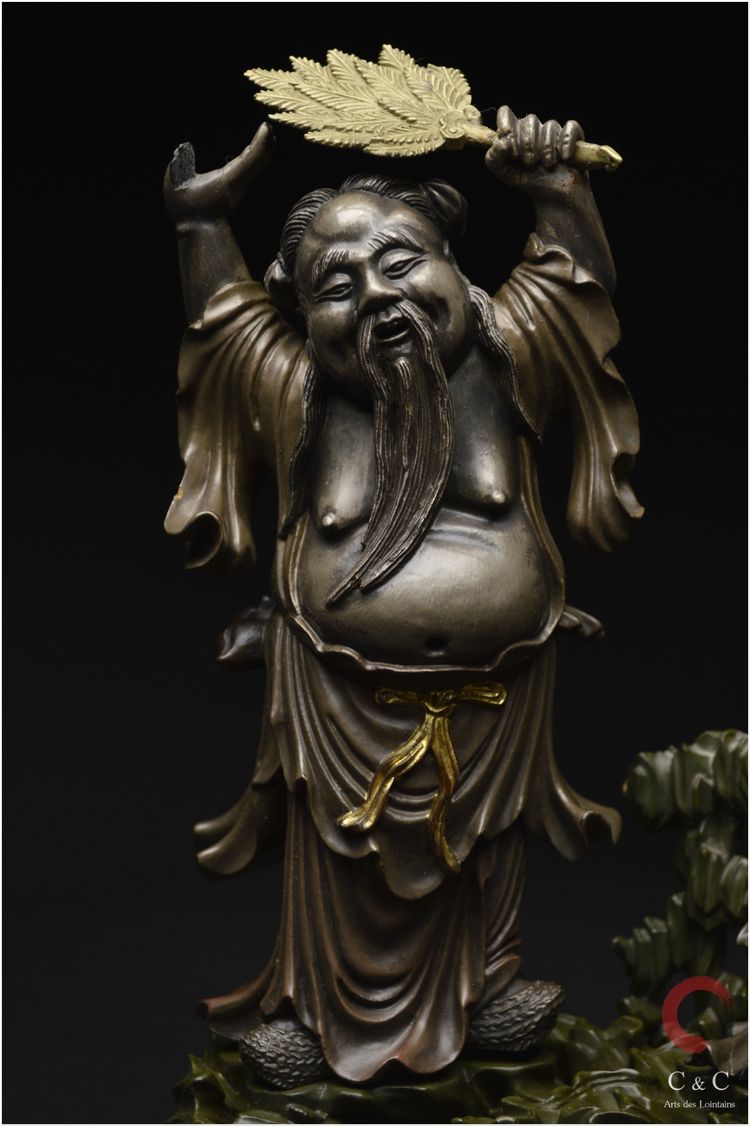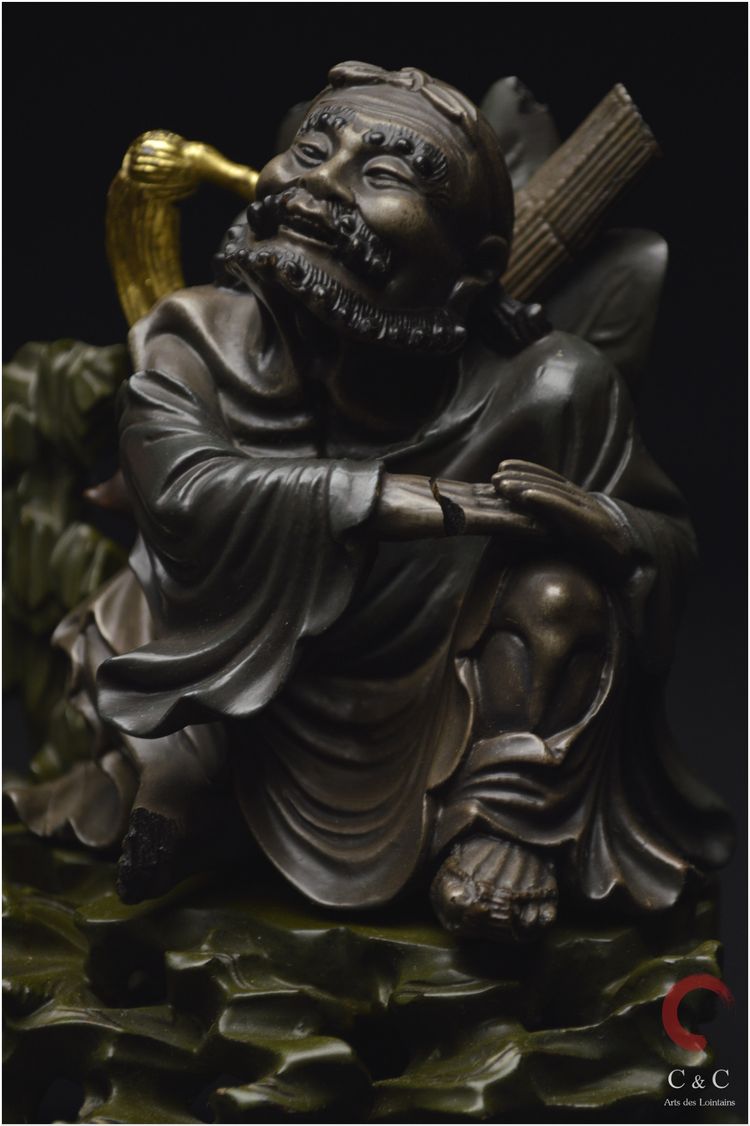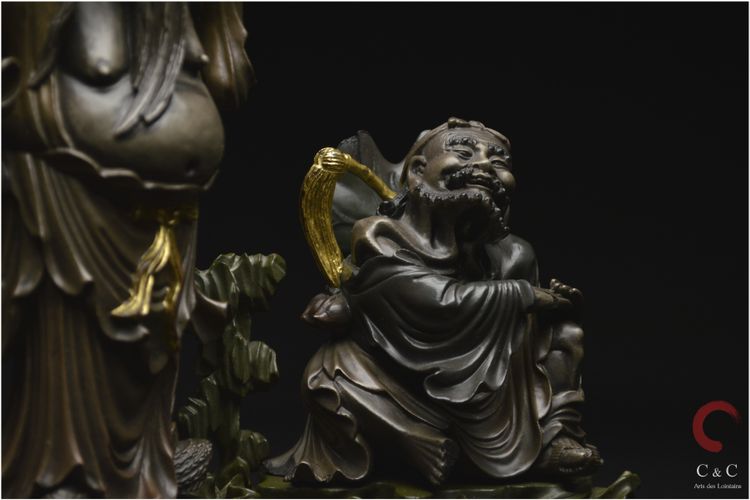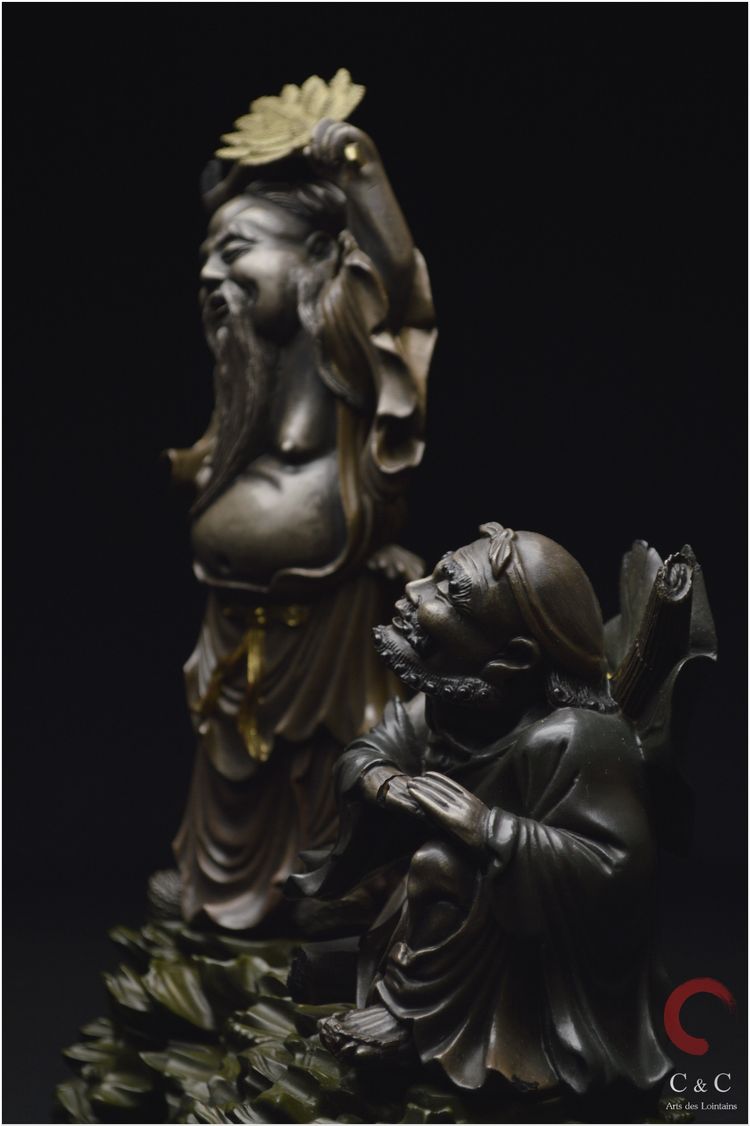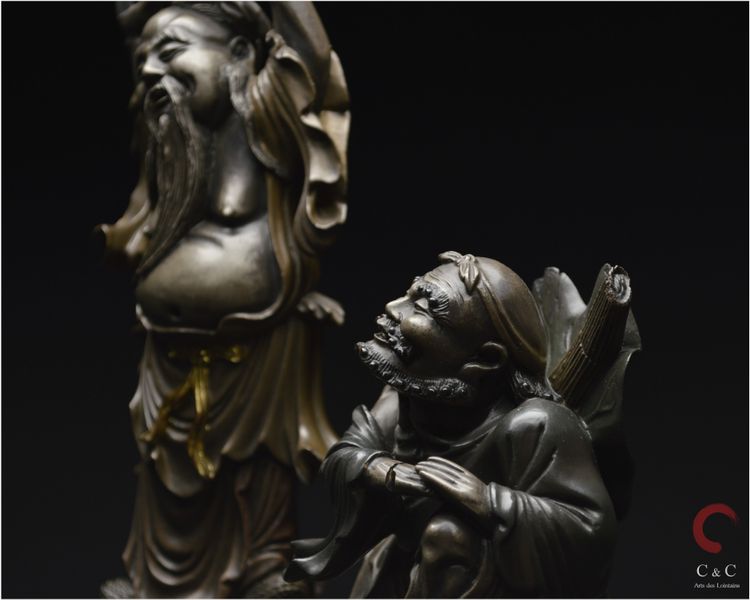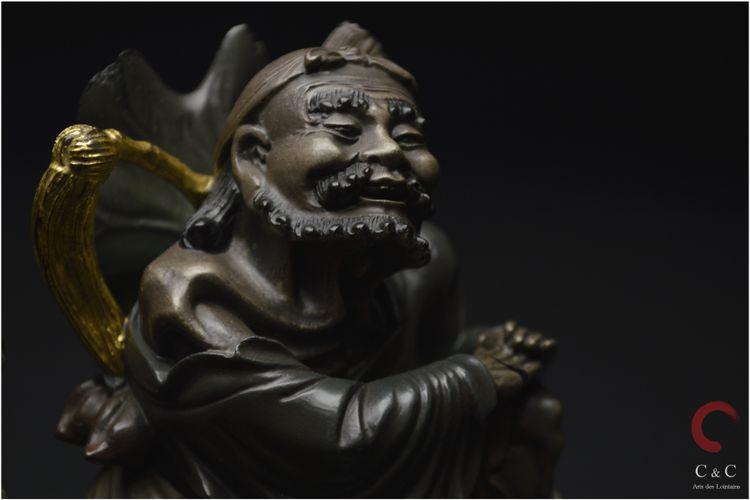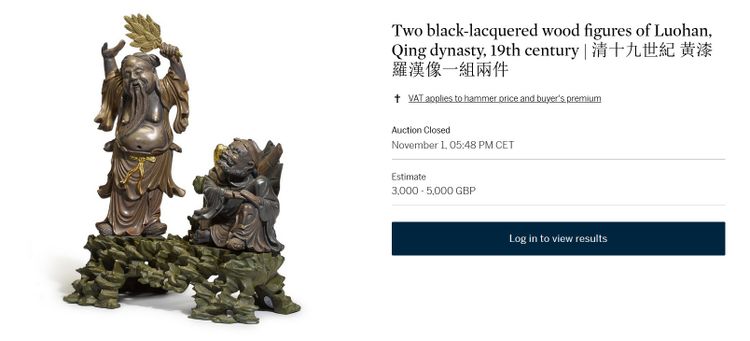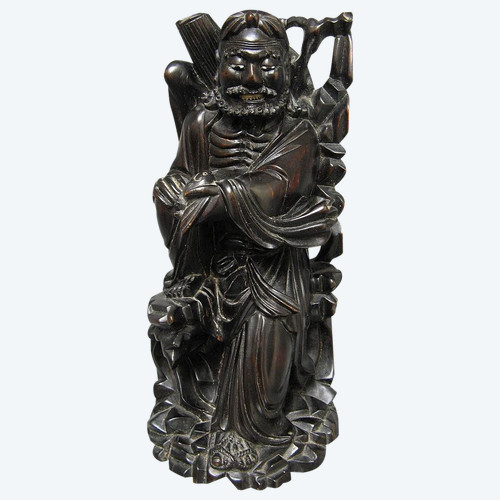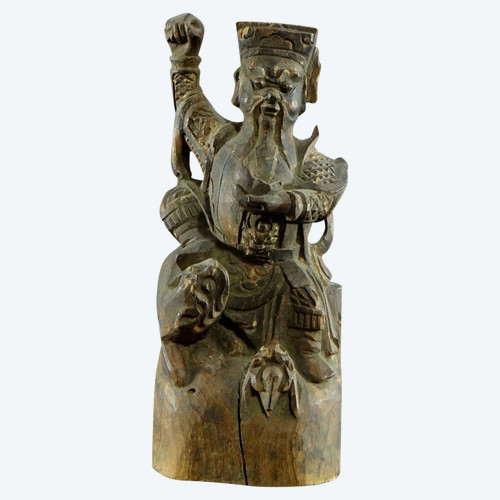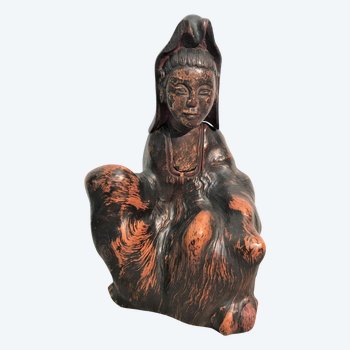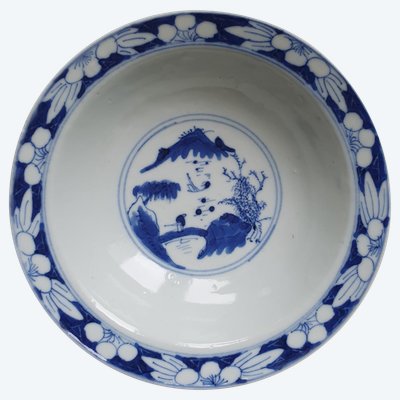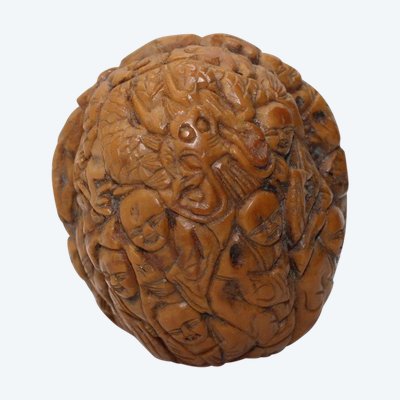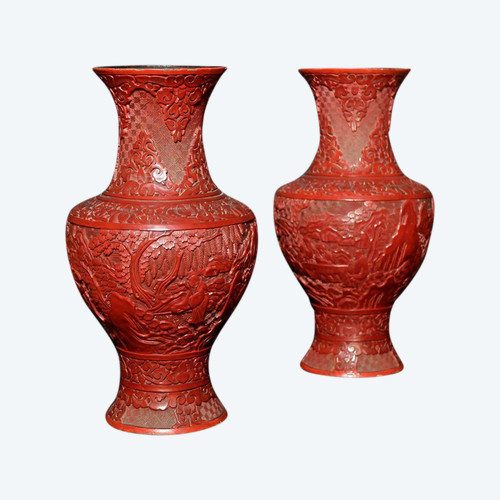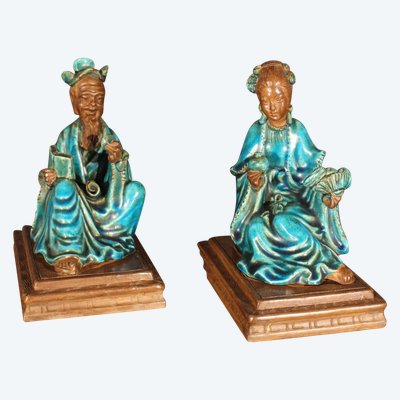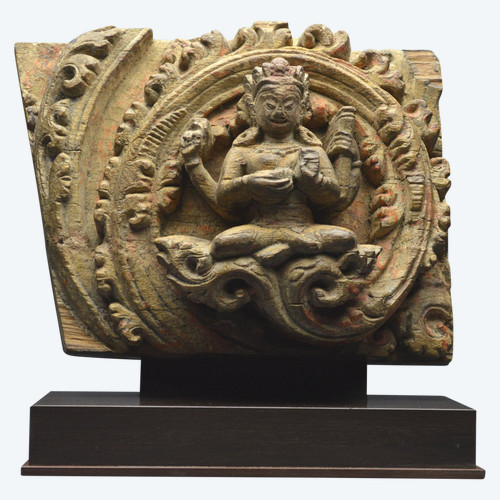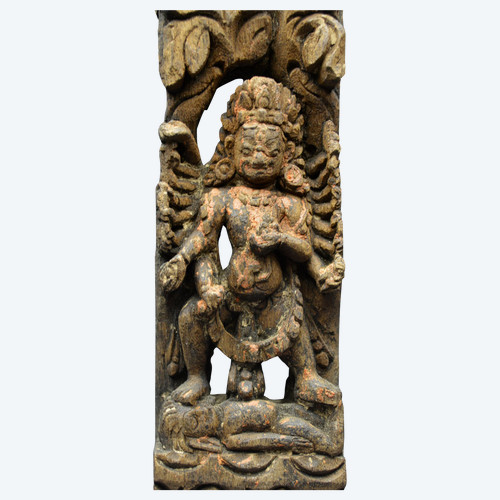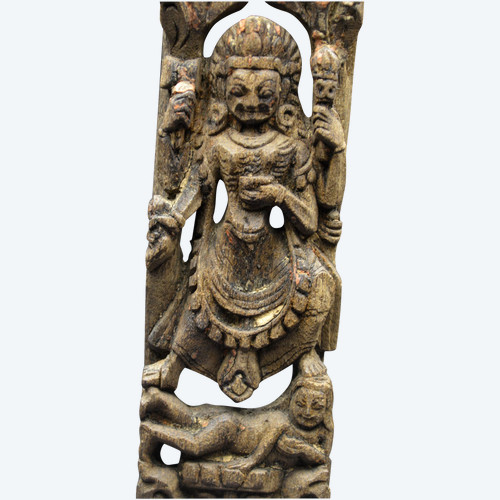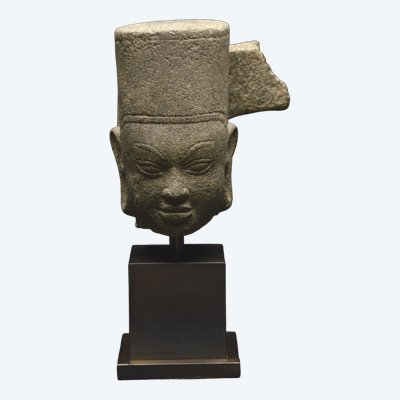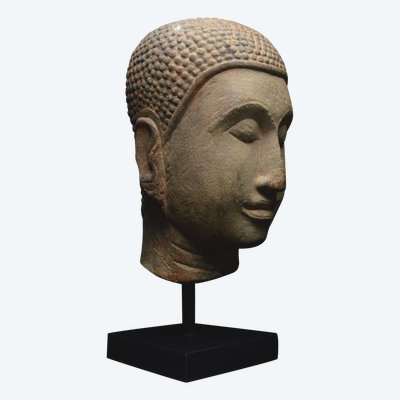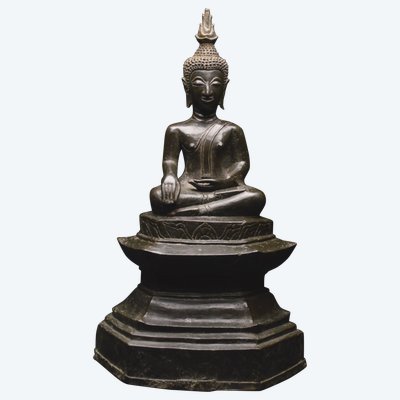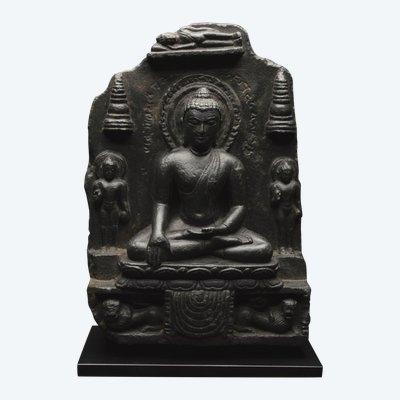This description has been translated and may not be completely accurate. Click here to see the original
Polychrome lacquered wood group in imitation of bronze featuring two Taoist Immortals
China, Fujian Province
Qing Dynasty, 19th century
The two Immortals, here LuDongbin and Li Tieguai, are represented on a rocky openwork base.
°°° Lu Dongbin is shown standing, wearing a monastic robe with carefully sculpted, flowing folds. The upper part of the garment is wide open, revealing the torso and a prominent belly. Both arms are raised, the left hand holding a fan, the fabric held in place by a golden belt on which hang two longevity peaches.
The face is jovial and benevolent, with crinkled eyes, rounded cheekbones and an open mouth suggesting laughter or joyful speech. The hairstyle is composed of strands delicately pulled back into two buns, revealing a slightly domed skull reminiscent of Shou-Lao, while the moustache and full beard reinforce the wisdom of the figure. The feet are shod with woven sandals, visible under the garment's flaps.
The prominent belly, jovial smile and posture are strongly reminiscent of Budai, while the facial features (rounded forehead, long beard and serene gaze) evoke Shou Lao, the Taoist god of longevity.
The fusion of these features underlines the religious syncretism typical of Chinese art, where the boundaries between Taoism, Buddhism and popular religion are porous.
Lu Dongbin is one of the Eight Immortals of Taoism, the central figure of the Chinese folk pantheon. A literary poet from the Tang dynasty, he was immortalized as a wandering sage with esoteric knowledge of alchemy and Taoist medicine. He embodies the transcendence of the material world and access to enlightenment. He is revered as a protector of scholars, a master of wisdom and a spiritual benefactor.
°°° Li Tieguai is depicted seated, evoking a meditative retreat, with his hands resting on his left knee, wearing a delicately draped monastic robe with an emaciated right shoulder. His left foot is shod with a single sandal, and two longevity peaches hang from his waist.
On his back is a large water lily leaf, associated with spiritual purity, a fly swatter and a rolled reed mat. The jovial-looking face is characterized by squinty eyes, prominent cheekbones and a half-open mouth sketching a discreet smile. The eyebrows, moustache and beard are thick, the hair falls to the shoulders, the forehead is lined with wrinkles, and the skull is encircled by a headband.
Li Tieguai is undoubtedly the most singular of Taoism's Eight Immortals. A figure both mysterious and profoundly human, he embodies detachment from social and bodily norms in favor of higher spiritual achievement.
According to legend, when his soul temporarily left his body during meditation, it was unintentionally incinerated by one of his disciples. Forced to reintegrate a body, he was reincarnated as a deceased lame beggar, and retained this appearance as a token of humility.
Under the Qing dynasty (1644-1912), Fujian province became a Mecca for the art of lacquerware, thanks to its strategic position and natural resources. The city of Fuzhou, in particular, stood out for the rediscovery and development of ancient techniques, reinterpreted with great sophistication.
The fine details, dynamic drapery, realistic facial expressions and perfect imitation of bronze highlight the excellence of Fujian lacquer craftsmanship.
Polychrome lacquered wood
Minor accidents and restorations
23 x 27.5 cm
Sotheby's sale November 1, 2023, see link below:
https://www.sothebys.com/en/buy/auction/2023/important-chinese-art-4/two-black-lacquered-wood-figures-of-luohan-qing
Contact us: culturesetcivilisations@orange.fr
Ref: KESSAPV4UD
 Louis XIV oak sacristy cabinet sideboard
1.300 € EUR
Louis XIV oak sacristy cabinet sideboard
1.300 € EUR

